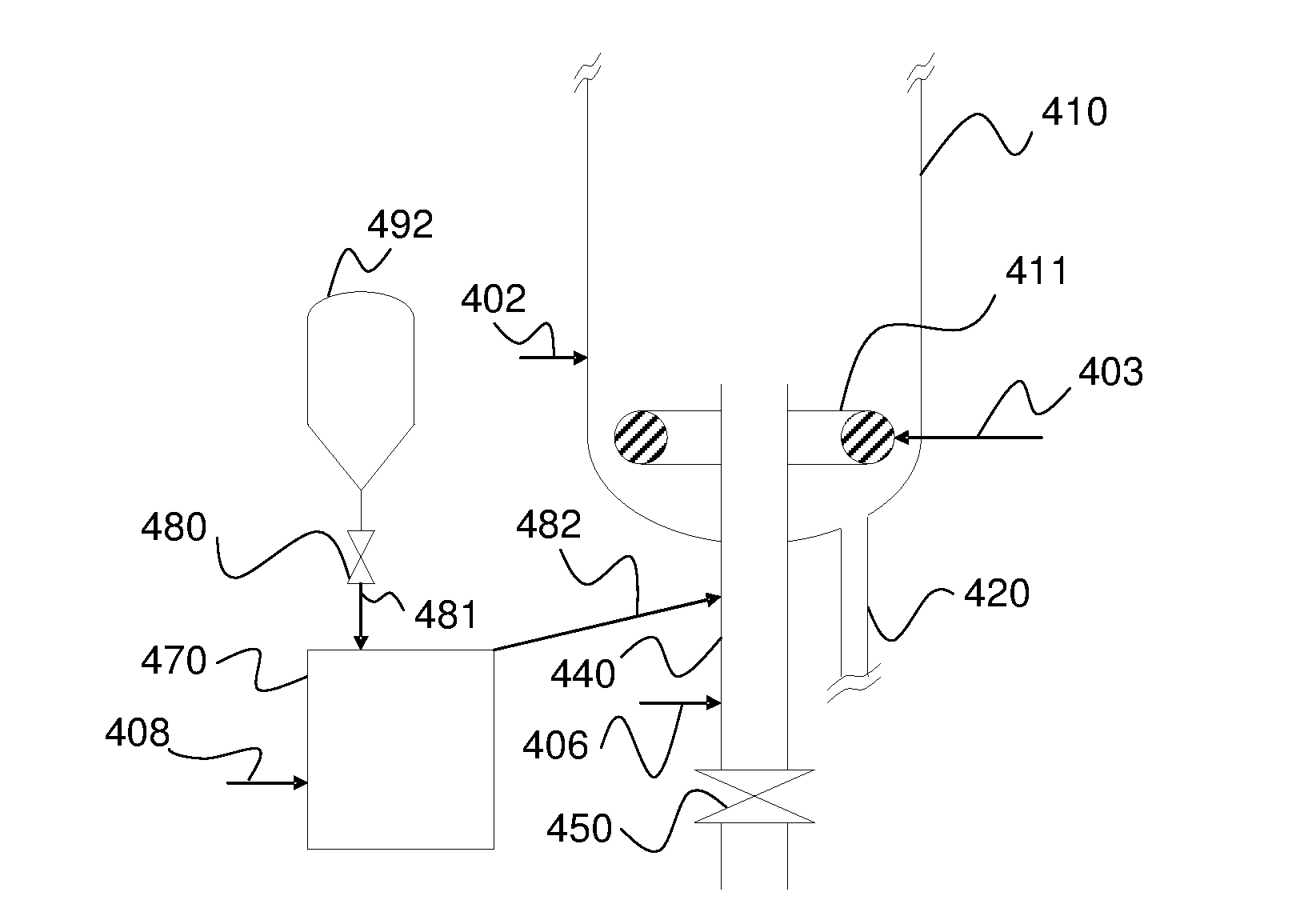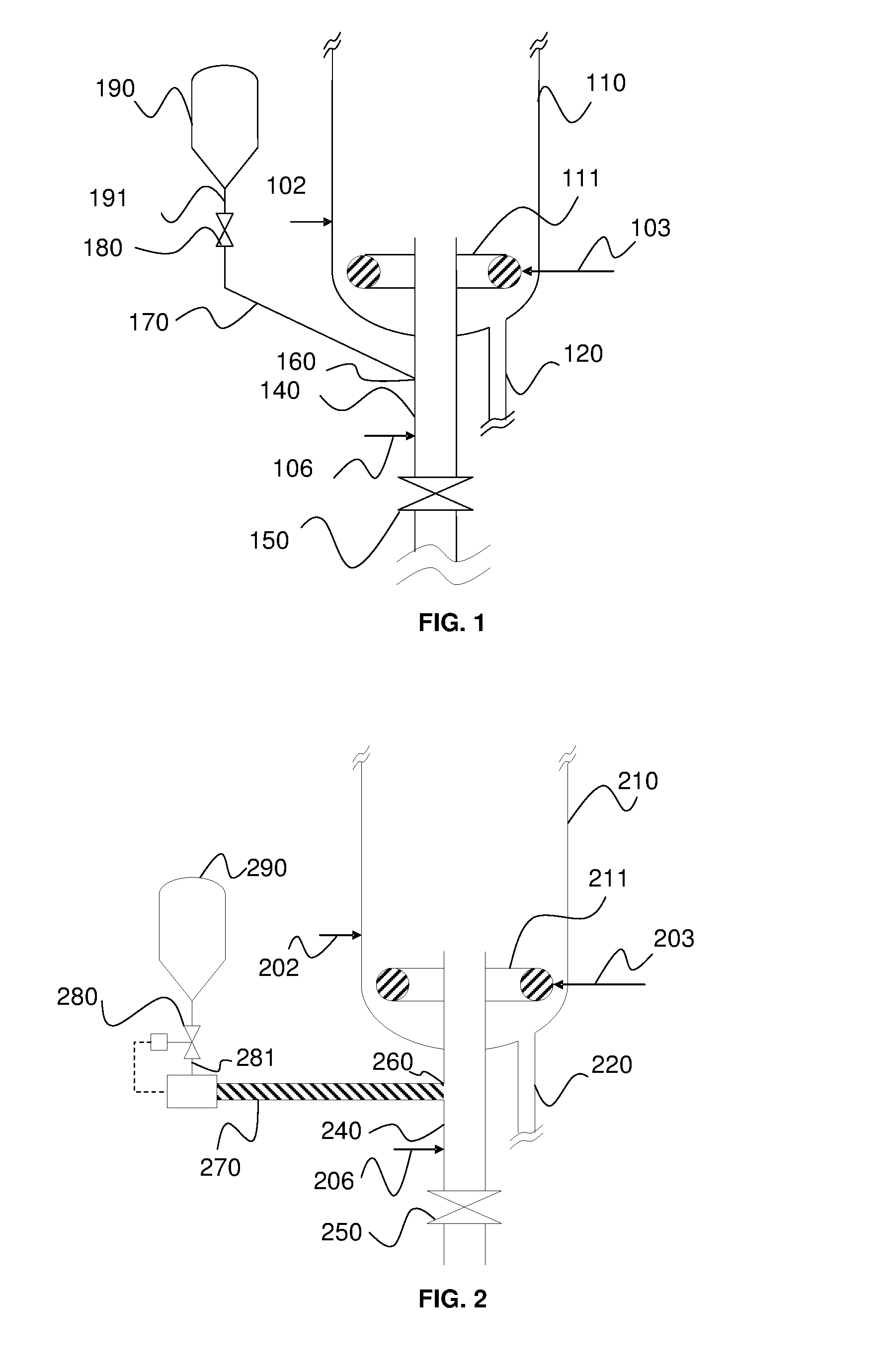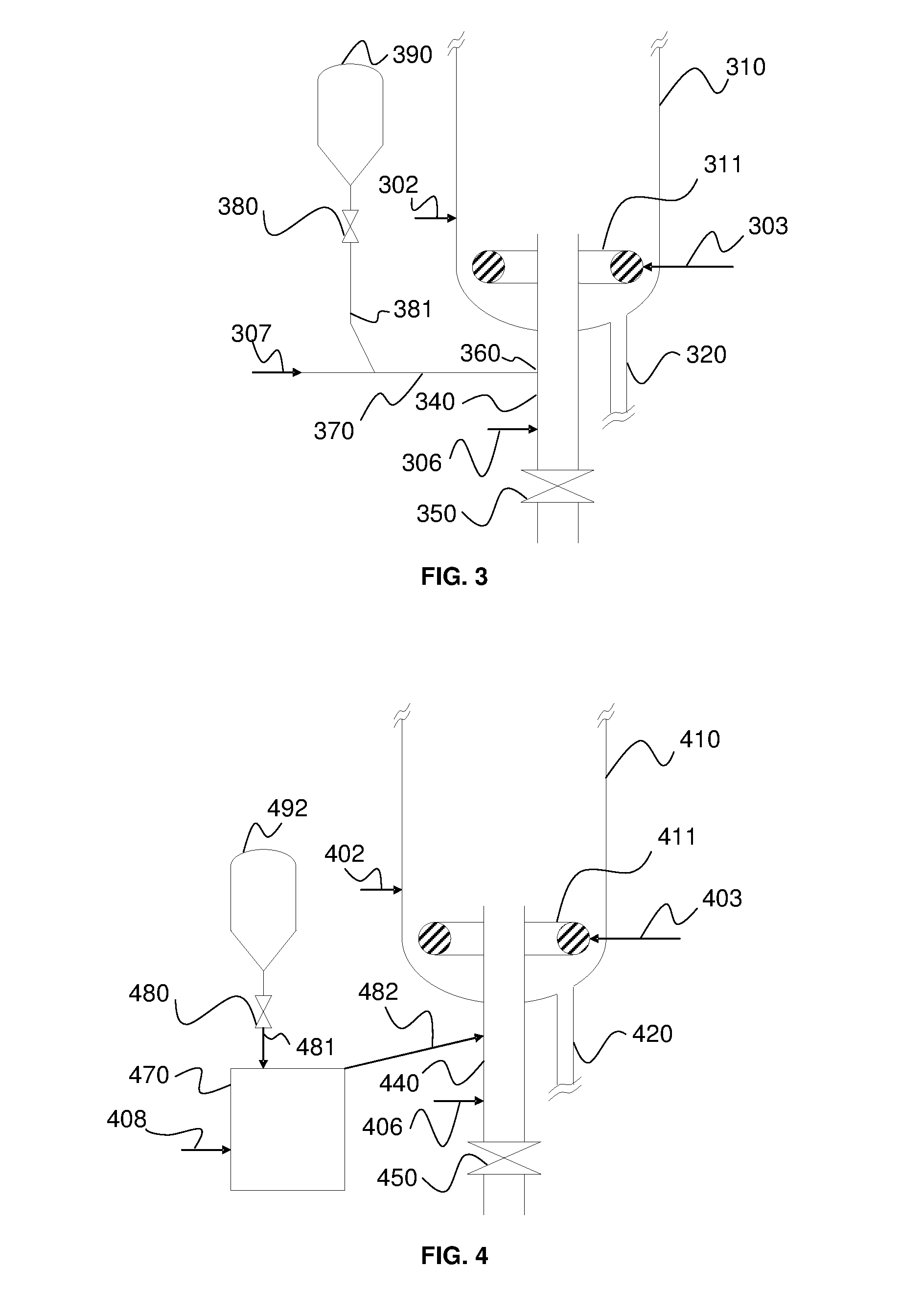Method and plant for redox chemical looping combustion of a solid hydrocarbon feedstock
a technology of hydrocarbon feedstock and combustion method, which is applied in the direction of combustion types, furnaces, lighting and heating apparatuses, etc., can solve the problems of sticking of solid fuel injected into the clc, fouling of the clc plant, and obstruction of the injector, so as to improve the dispersion of redox active mass particles
- Summary
- Abstract
- Description
- Claims
- Application Information
AI Technical Summary
Benefits of technology
Problems solved by technology
Method used
Image
Examples
example 1
[0165]This example relates to the configuration described in connection with FIG. 5.
[0166]The fluidized bed of combustion reactor 510 is a 2-MWth coal combustion fluidized bed. It is supplied with 0.078 kg / s of South African coal whose characteristics are given in Table 2 hereafter.
TABLE 2Composition and characteristics of the carbon feedCWt. %70.00HWt. %4.14OWt. %9.32NWt. %1.84SWt. %0.80AshesWt. %13.90Volatile matter %%29.90Fixed carbon %%56.20Humidity %%4.00Ultimate drying LHVkJ / kg26.843Air drying LHVkJ / kg25.769Raw coal flowkg / s0.078
[0167]The combustion reactor is operated in CLC mode at 950° C. under fluidized bed conditions. The fluidized bed is supplied with 5.11 kg / s of redox active mass through supply means 502. The bed is fluidized by 0.04 Nm3 / s water vapour 503.
[0168]A mixture comprising agglomerated bottom ash and active mass particles is extracted from reactor 510 through extraction line 520 at a flow rate of 0.5 kg / s. The solid extracted from the reactor bottom has a hig...
example 2
[0176]Example 2 is a comparative example corresponding to an implementation of the CLC method according to the prior art. We consider in this example the same configuration as in Example 1 as regards equipments 510, 503, 530. However, in this example, there is no elimination of the ashes according to the invention and extraction line 520 does not open onto a separation zone, but directly onto the outside.
[0177]The solid mixture extracted from the unit at a rate of 0.5 kg / s has a composition of 20% agglomerated bottom ash as defined in Example 1 and 80% redox active mass as defined in Example 1.
[0178]Table 3 gives the data relative to the streams extracted from line 520 and from the CLC unit (bottom of 140) for Examples 1 and 2.
TABLE 3Input / output comparative of Examples 1 and 2Ex1Ex2Ex1Ex2(120)(120)(bottom of 140)(bottom of 140)Flow (kg / s)0.50.50.1200.5Agglomerated20208320bottom ash %Active mass %80801780
[0179]The redox active mass outputs need to be compensated by a makeup supply s...
PUM
 Login to View More
Login to View More Abstract
Description
Claims
Application Information
 Login to View More
Login to View More - R&D
- Intellectual Property
- Life Sciences
- Materials
- Tech Scout
- Unparalleled Data Quality
- Higher Quality Content
- 60% Fewer Hallucinations
Browse by: Latest US Patents, China's latest patents, Technical Efficacy Thesaurus, Application Domain, Technology Topic, Popular Technical Reports.
© 2025 PatSnap. All rights reserved.Legal|Privacy policy|Modern Slavery Act Transparency Statement|Sitemap|About US| Contact US: help@patsnap.com



